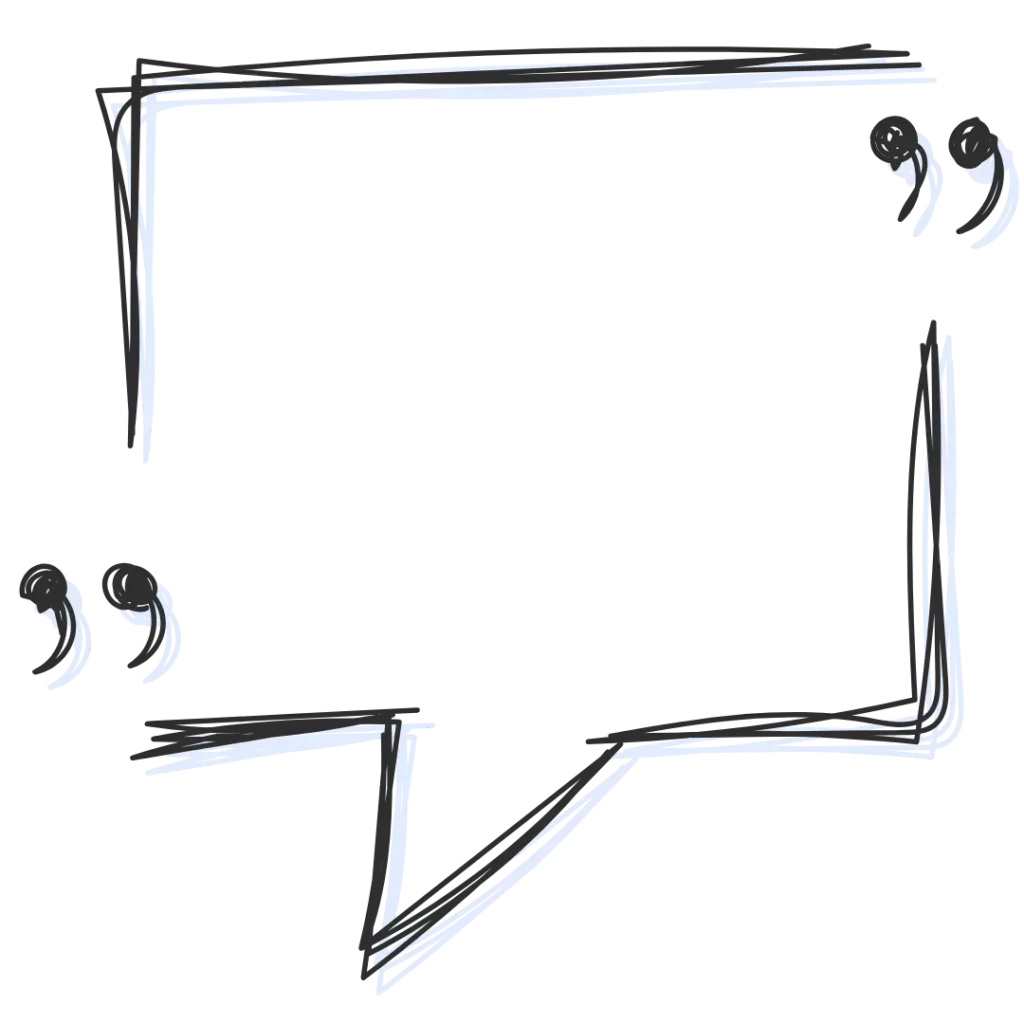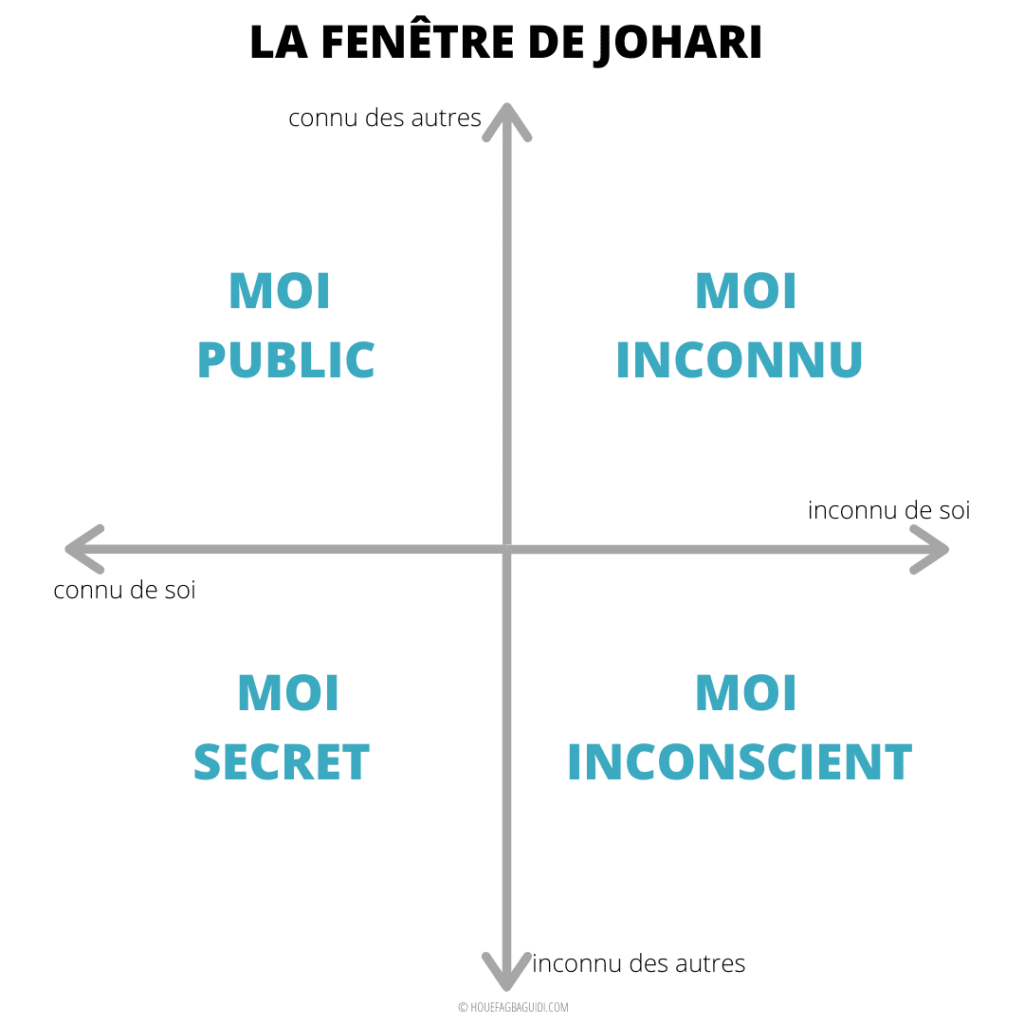Getting to know yourself better through the Johari window
Dernière mise à jour de l'article le 18 March 2025
Discover how the Johari window tool can help you get to know yourself better and improve your relationships. Learn to identify your public, hidden, blind and unknown areas to improve your self-awareness and communication skills.
Key points to remember:
- The Johari window is a powerful tool for getting to know yourself better and understanding the perceptions of others.
- It identifies our blind, hidden, public and unknown zones.
- Working on our Johari window can improve our communication and relationships.
Introduction: the Johari window, an approach for getting to know yourself better and understanding the perceptions of others
I’m going to tell you about a great personal development tool used to improve self-awareness and relationships: the Johari Window.
To illustrate this tool, here’s a little experiment:
(1) Suppose you take a sheet of paper and I ask you to describe yourself, to define who you are, in other words the person you are today, your character traits, your personality, your qualities and your faults…
(2) And then I’d ask people close to you or your colleagues to take a sheet of paper and answer the same questions about you. Ask them to describe you as they see you. In other words, the person you are today, your character traits, your personality, your qualities and your faults.
(3) And finally, taking things a step further, suppose I asked complete strangers who had observed you for 1 hour to do the same exercise?
In your opinion, what would be the percentage of common responses? of totally different responses?
Our perceptions of a situation are different. And the same goes for people.
But what is even more intriguing is that our perception of ourselves can also be altered, and certain elements can even be unknown to us until others bring them to light and they come to light.
One of the reasons for this is this great tool that I’m going to explain to you. So if you want to find out more about how this Johari window works, I invite you to read the rest of this article.

Self-knowledge is essential for transformation. Without knowing yourself, there can be no transformation.
– Krishnamurti
Discover the Johari window, a tool for self-awareness, by watching a Japanese anime …
The first time I discovered this tool was … while watching Japanese anime (I’m a fan!).
I was watching a Japanese anime* and one of the characters was reading a social psychology book on the tube about this tool. The character explained that the purpose of the Johari window was to get to know your true self better.
The idea was to imagine your mind as a window made up of four dials depending on what you knew about yourself and what others knew about you.
I was intrigued by this concept, which was supposed to give us a better idea of who we were, so I wanted to find out if it really existed.
And what a surprise it was when I read on the Internet that the Johari window was a real tool for personal development!
The concept was created by Joseph Luft and Harrington Ingham in 1955, and the word Johari is derived from the first letters of the inventors’ first names.
It’sa matrix made up of four dials to describe the interactions between people. Each dial represents a stage of self-knowledge and helps us to understand the image we project to others.

The window classifies information about you along two axes:
- on the x-axis: information we know about ourselves
- on the y-axis: information known to others
This represents four dials in this window.
The PUBLIC ME is the area known both to others and to ourselves. It is the information we share about ourselves. It is the information and experiences that we have lived through and that we voluntarily share with others during our various exchanges and interactions with others.
The UNKNOWN ME is called the blind spot. This is the window that is known to others, but unknown to myself. Impossible, you might say: information known to others is necessarily known to oneself! Let me give you the example of language tics. Haven’t you ever had someone point out a tic you had after speaking in public? Scratching your nose when you’re stressed, repeating the same word, clearing your throat… We don’t necessarily realise this, but contact with others and feedback make us aware of these elements that have been brought out of the shadows of our unconscious into the light of our conscious mind.
The SECRET ME is called the hidden zone. It’s what you know about yourself that you hide from others for your own reasons. It’s the mask we decide to wear in society, for example, or the secrets we don’t want to share for fear of judgement or simply for personal ambition.
The UNCONSCIOUS SELF is known as the unknown zone. Quite simply, it is all the information we are unaware of, buried in our unconscious and also unknown to others.
How to develop greater self-awareness using the Johari window
These four dials help us to develop a better understanding of our personal image both in society and in the workplace. What you need to bear in mind is that these four dials are not set in stone.
Our Johari window evolves as a function of our interactions with others.
For example, when we talk to other people, we share information about ourselves and therefore expand the area of the PUBLIC ME.
It also enables us to understand how others perceive us and allows us to explore the blind spot. Feedback, for example, will be important in raising awareness of this UNKNOWN SELF.
When, for example, you ask friends or colleagues to give you feedback on a service you have provided, this enables you to identify elements of which you were not necessarily aware.
To discover someone’s SECRET SELF, it’s important to develop mutual trust and a certain intimacy with the person. Remember the last time you confided in someone. What were the circumstances that helped you to do so? In what setting did you feel sufficiently supported to drop the mask?
In coaching, for example, awareness-raising helps to uncover the UNCONSCIOUS SELF. These include the beliefs, internal resources and hidden talents of individuals. This zone comes to light when we dare to leave our comfort zone and face up to challenges and new situations that were previously unknown to us.
An example of how the Johari window can be used in a company or group setting
If you’re interested in this tool, here’s an example of how it can be used in the corporate world. In business, this self-awareness tool can be used to develop team spirit and cohesion.
For example, each member of staff is given a list of qualities. Each member of staff identifies at least 5 qualities that they feel they possess and for each of the other team members, they also select 5 qualities attributed to their colleagues.
Then, during the debriefing phase, each person shares the 5 qualities he/she has retained for his/her colleague.
Each person then classifies these qualities in the 4 different quadrants:
- If a quality has been identified both by the person and by another colleague, it joins the KNOWN ME dial.
- If a quality has only been identified by the person, it will be added to the SECRET ME dial.
- If a quality has been identified by the group, but not by the individual, that person will join the UNKNOWN ME dial.
- All the qualities that have not been selected, either by the person or by the group, will join the UNCONSCIOUS ME dial.
It’s interesting to look at the 2 quadrants SECRET ME and UNKNOWN ME.
For example, for a quality identified by the person but not by others, it would be interesting for that person to explain why he or she selected that quality. This could enable the group to discover the person from another angle, one that is not necessarily highlighted in the context of the person’s current role.
Conversely, for a quality identified by the group, but not by the individual, it would be interesting for the group to explain why this quality was selected, which would enable the individual to become aware of this quality in him or herself and thus boost their self-confidence.
This Johari window is a tool that helps us to work not only on ourselves, but also to open up to others.
I invite you to reflect on these 4 dials for yourself to become aware of the different ‘selves’ that lie dormant within you.
The aim is not to remove any of these dials, we need all 4 elements, but rather to identify what balance you want to have in these dials.
For example, if you feel that the known zone is relatively small, perhaps you’d like to open up more to others. Think about what you need to do to let this area eat into the hidden area.
Or if you feel that the unknown area is huge, one idea would be to go and explore it and transform it into a new area known to you.
And if you’d like to explore the blind and unknown areas, I invite you to listen to the podcast Le Quart d’Heure d’Inspir’Action, which offers you personal development exercises to carry out each week to develop a better understanding of yourself.
*This tool is introduced in the 1st episode of the anime Caligula.

Leave a Reply